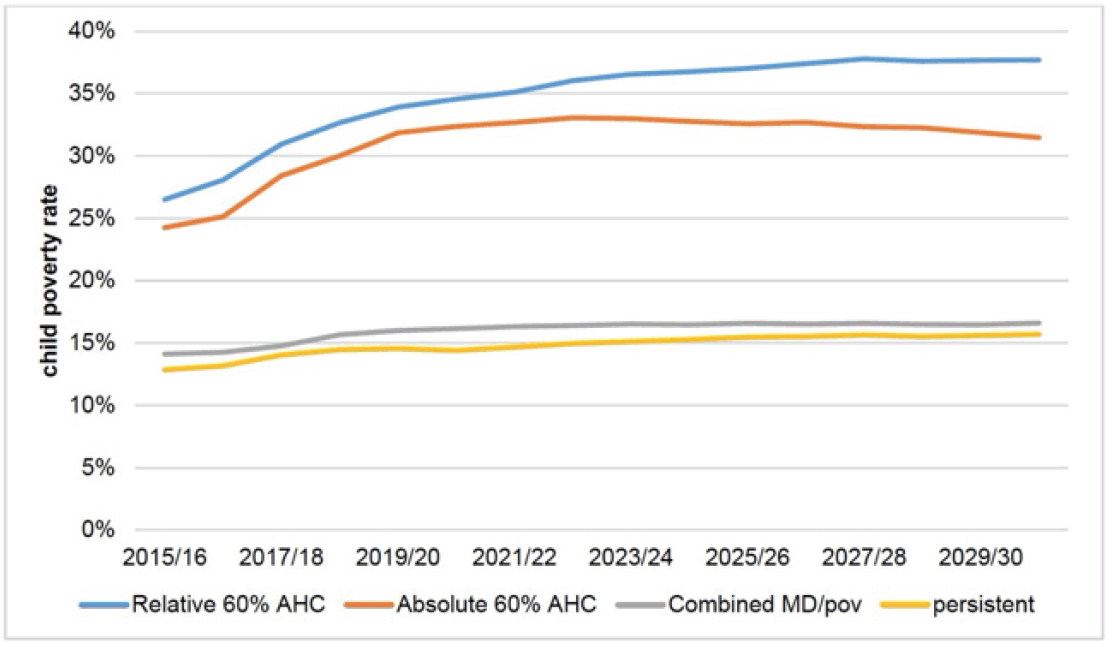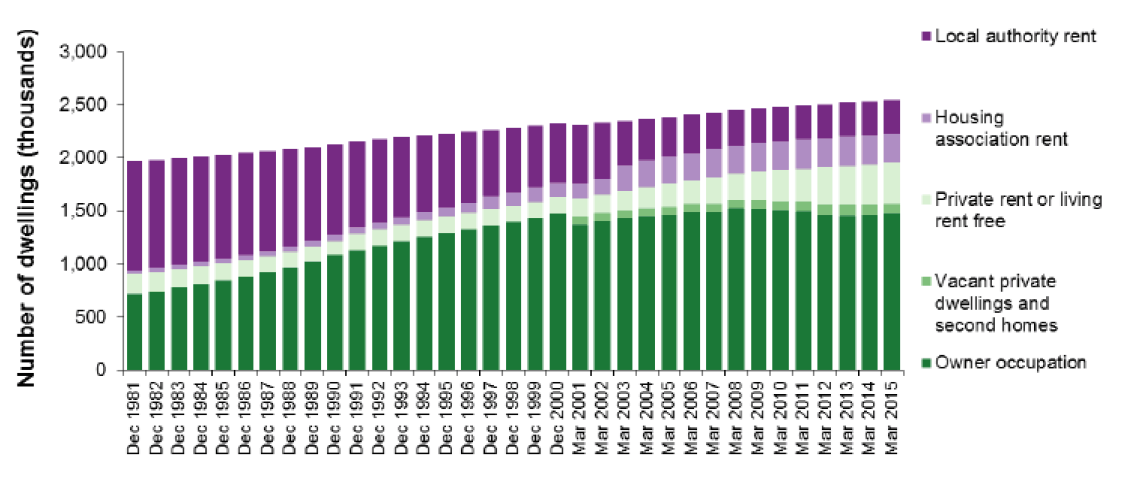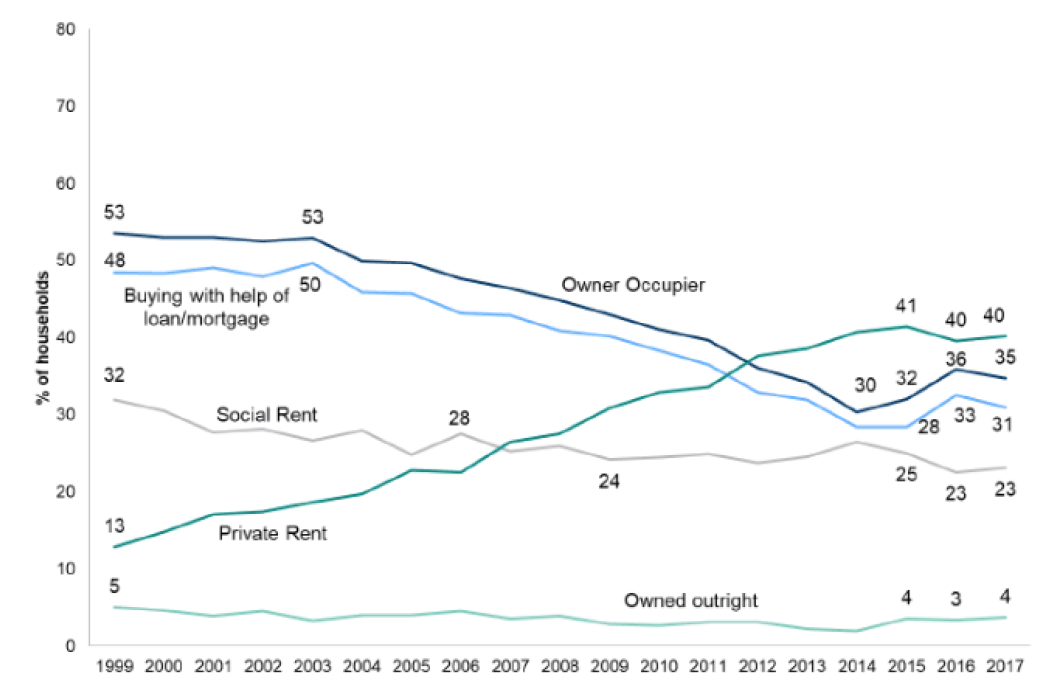Children's Health and Wellbeing - Horizon Scanning Review
The review summarises the predicted societal trends and shifts that will likely shape the lives of children and young people over the next decade.
4. Economic Inclusion
This section discusses trends and projections in poverty and housing.
4.1 Poverty trends affecting children
Over the second half of the last decade, in work poverty has increased in Scotland, in a context of falling poverty rates overall, suggesting that the link between paid employment and adequate income is weakening. This change was even more pronounced for child poverty. In 2014-17, two thirds (66%) of households with children in relative poverty after housing costs had at least one person working, an increase from just under 50% in 2006-09 (see Figure 9).[19]
Figure 9. In-work poverty for children
Source: Poverty and income inequality in Scotland: 2014-2017
Child poverty projections
Figure 10 shows that the relative child poverty rate is forecast to rise sharply between 2019 and 2020/21, to 34.5%. The 2020s are expected to see relative child poverty continue to increase, but at a slower rate, before levelling out at just under 38% from 2027/28 onwards. A key driver of the sharp increase is the reduction in the real terms value of social security as a result of planned reforms by the UK government.[20]
Figure 10. Headline child poverty rate forecasts, Scotland, scenario (c), 2015/16 to 2030/31
Source: Scottish Government Tackling Child Poverty Delivery Plan, 2018
4.2 Current housing trends
There has been a change in housing tenure away from local authority housing towards the private rented sector, with stabilising levels of owner occupied housing, despite an overall increase in housing stock (see Figure 11).[21]
Figure 11. Estimated stock of dwellings by tenure, 1981 to 2015

Source: Housing statistics for Scotland 2017
The proportion of households in the private rented sector has grown steadily from 5% in 1999 to 15% in 2017. Social renting fell from 32% to 22% over the same period. This change is most marked for the younger (16-34) age group. Among households within this age group, private renting increased from 13% in 1999 to 41% in 2015. Owner occupation reduced from 53% to 35% over the same period (see Figure 12).[22]
Figure 12. Tenure of households by year 1999-2017 (HIH aged 16 to 34)

Source: Scottish Household Survey 2017
The average household size continued to decrease slightly between the 2001 and 2011 censuses, following a more marked decline in the four decades before that. In the most recent census, the majority of households were single person (34.7%).[23] This has increased the overall number of households, putting further pressure on current housing stock.
4.3 Projections for temporary housing and homelessness
In Scotland, the number of children in temporary accommodation increased by 557 (9%) to 6,615 in 2018 compared to the previous year, the fourth consecutive annual increase.[24] The most acute forms of homelessness are also likely to keep rising, with overall numbers estimated to increase by more than a quarter in the coming decade and households in unsuitable temporary accommodation set to nearly double (Figure 13).[25]
Figure 13. Baseline forecast for core homelessness in Scotland by component.

Source: Crisis Homelessness projections 2017
4.4 Key points
- The number of households with children in relative poverty has increased.
- If current policies continue unchanged, relative child poverty is expected to continue to increase over the next 10 years.
- There has been a shift away from social renting and owner occupation towards private sector renting, particularly among the younger age groups
- The number of children in temporary accommodation in Scotland has increased.
Contact
Email: socialresearch@gov.scot
There is a problem
Thanks for your feedback